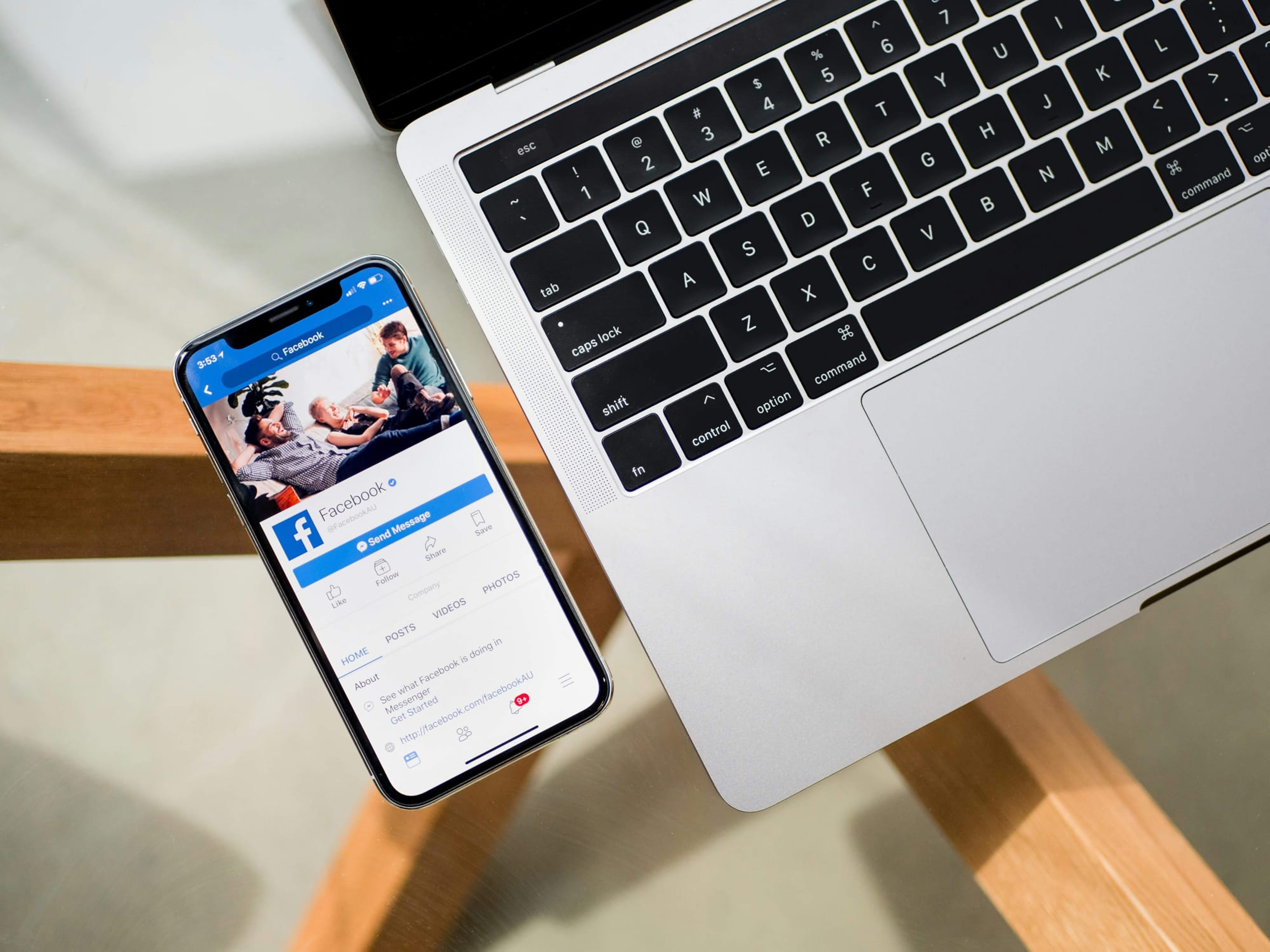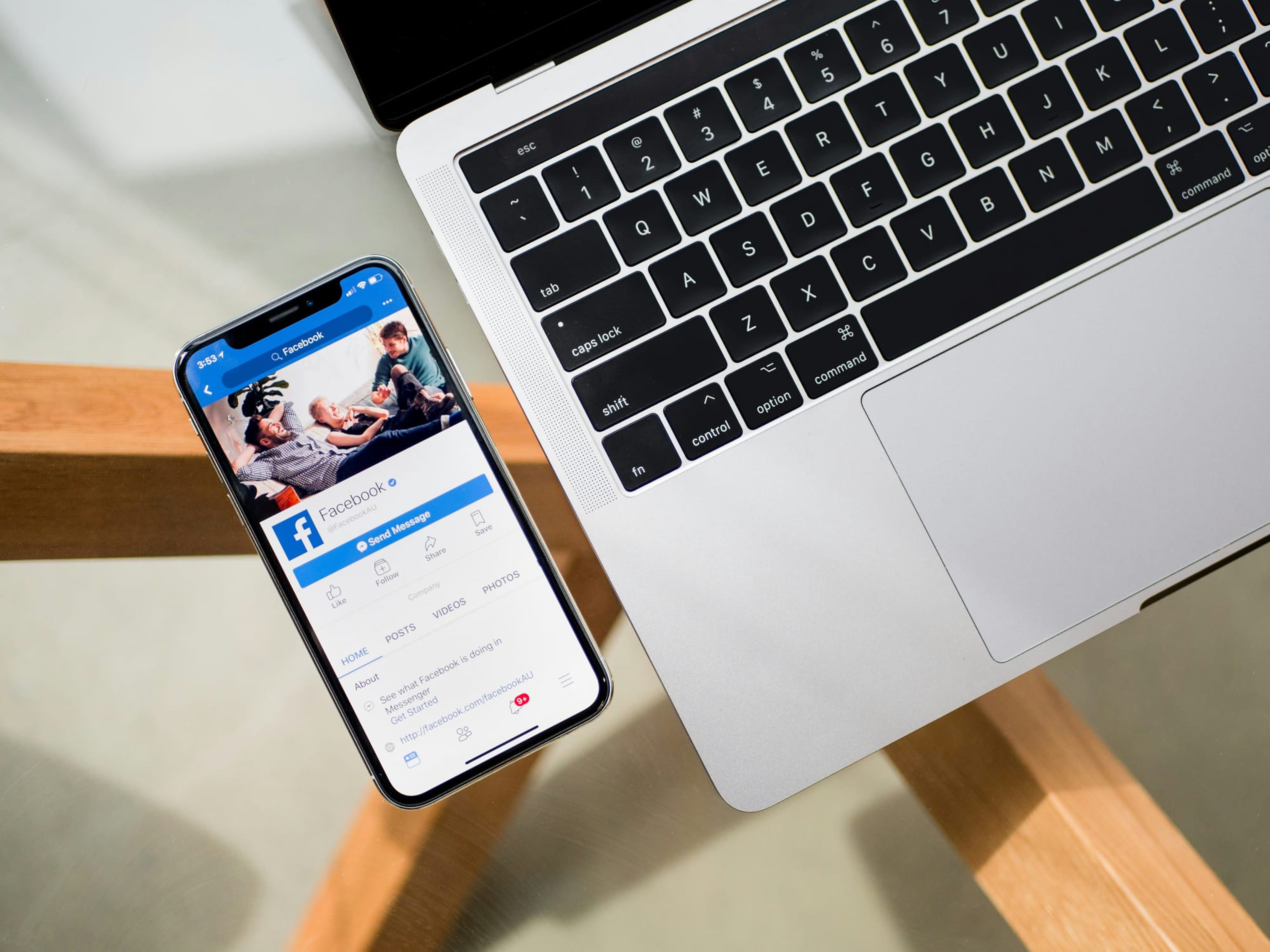As a small business owner, you usually don’t have the bandwidth or funds to invest in comprehensive digital marketing plans like big companies do. Unpaid social media marketing helps grow your business without a dedicated marketing team or a big budget.
With 2.9 billion active users, Facebook is the most popular social network of them all. No matter what kind of business you have, your customers are likely on Facebook. What’s more, 2/3 of Facebook users visit a local business’ page at least once a week. It’s no wonder that 93% of marketers use Facebook, and 54% of them rank Facebook as the most important social network for marketers.
Facebook can help you magnify brand awareness, find new customers, nurture customer loyalty, increase website traffic, improve sales, and enhance customer service. All it takes is a free business page to get started.
Plan, schedule, and analyze your posts to Facebook Pages and Groups with Buffer's Facebook scheduling and analytics tools.
Can your small business do well on Facebook?
Any business can do well on Facebook — whether you own a local tea lounge, ecommerce store, hair salon, or landscaping business. If your customers are on Facebook, you can be successful on the platform.
But if you only have time to focus on one or two social media platforms, you want to make sure Facebook is most popular with your current (and future!) customers. Here’s how to find out.
1. Ask your customers
The easiest way to find out if Facebook is a good place to reach your customers is to ask them.
If you have an email list, send a brief survey to your customers asking about their social media habits. Ask which platforms they use most often and where they like to follow brands.
Typeform and SurveyMonkey are two free survey tools to try. Typeform has a social media survey template you can use to get started. Customize it so you can get the information you want about your customers.
No email list? Ask customers whenever you have a chance, whether that’s at the checkout in your physical store or during a client’s appointment.
2. Compare your target audience to Facebook’s users
Different audiences are more active on certain social media platforms than others. You can compare the demographic (gender, age, geographical location, income, etc.) and psychographic traits (interests, values, beliefs, and personality) of your target audience with the social media platforms you’re considering.
For example, Facebook is most popular with millennials.
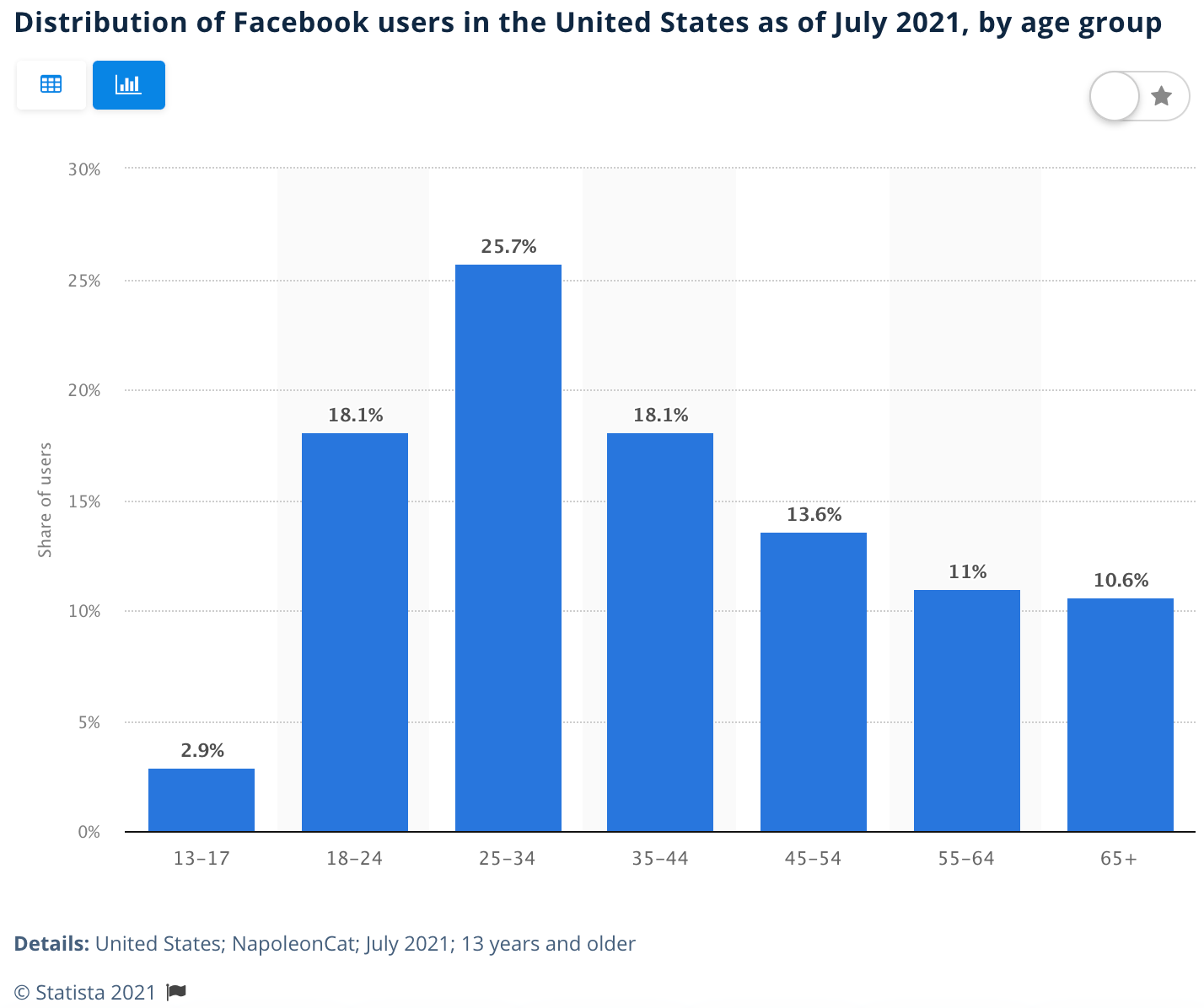
Aside from teens, even other age groups have more than 290,000,000 users making the platform worth exploring. But if teens are your target audience, you’ll want to consider other platforms like TikTok, where 25% of users are in the 10-19-year-old range.
3. Take a peek at your competitors
If businesses similar to yours have a large following and are getting lots of audience engagement through comments and likes on Facebook, it’s likely your target audience is on Facebook. After all, your competitors’ customers are potential customers for you, too! You just need to start posting.
If your competitors aren’t on Facebook, it might not be the right platform. That said, if multiple customers have told you they’d follow you on Facebook, it could mean there’s untapped potential in your niche, and you’ll be the first to discover it.
How to get started with Facebook marketing for small businesses
Getting ready to create your first post? Use these Facebook marketing tips to set your business up for success.
1. Fully set up your Facebook business page
As a small business marketing on Facebook, your business page is like your homepage on the platform. It tells potential fans who you are and what you do as a business. So it’s important to set up your business page for recognizability.
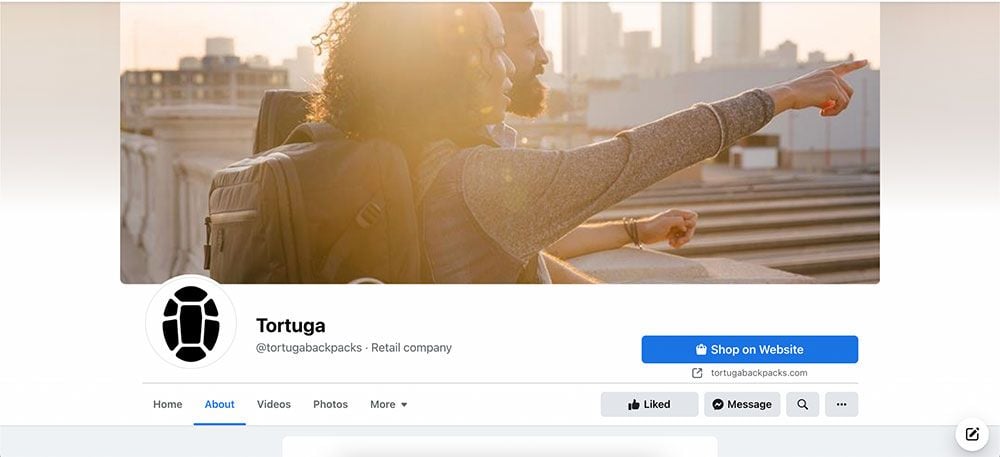
- Start with your profile picture: This is the most important thing to do to make sure your brand is recognizable by your audience. Use your logo or brand icon as your profile picture.
- Add a cover photo: A cover photo is your audience’s first impression of your brand. The good ones elicit an emotion or encourage a specific action, like acting on your seasonal sale. Snap a picture of your product in action, physical store, team, or upload an image that features your latest offer.
- Fill out contact information: This should be complete and up-to-date, including your website, email address and/or phone number for customer service, and location, so people know how to find you and connect with you.
- Clarify your business in the about section: It’s important for browsing fans to know what you do! Focus on what makes your business unique. For example, maybe you own an apparel business that focuses on high-quality, versatile designs. Or maybe philanthropy is a focus, and you donate to charity with every purchase, like Bombas below. Let your fans know here.
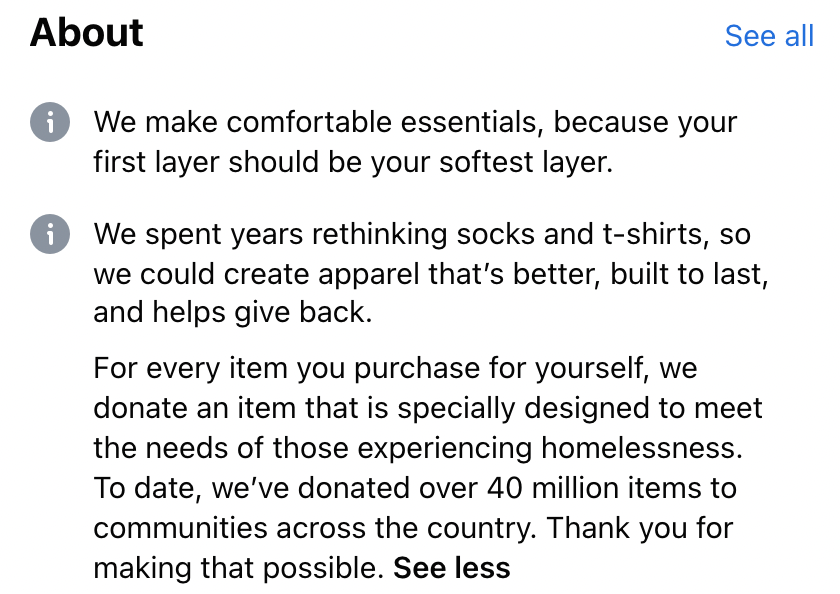
- Choose the right page template: Facebook has several pre-built templates that cater to different types of businesses. Select the one that represents your business best and customize your page from there.
- Customize your call-to-action (CTA) button: Want your Facebook fans to go to your website? Book an appointment? Call your store? Customize the CTA button at the top of your Facebook page to direct your fans to take the most useful action for your goals.
- Create a vanity URL: Once you have 25 fans, you can claim a vanity URL for your page (e.g. facebook.com/bufferapp 😄). This will look more official and be easier for your audience to type than a long URL of random letters and numbers.
Now you’re ready to draw in fans!
2. Know your content types
Video posts see the highest engagement rates. And posts that contain photos see higher engagement rates than posts with links or plain-text posts. However, every type of content has its place on Facebook, and it’s worth using all of them depending on how you’re trying to engage your audience.
- Plain-text posts: These are great for sparking conversation. You can use plain-text posts to ask your fans questions or ask for feedback.
- Link posts: Posts with links show a preview of the website, so the visuals can catch more attention than a plain-text post. Use these when you want to encourage a specific action like shopping a sale or promoting a blog post.
- Photo posts: Facebook posts with photos catch people’s attention when they’re scrolling their news feed. They take less effort to create than videos while still increasing your chance of engagement.
- Video posts: Facebook videos play automatically, so it’s even easier to grab people’s attention. It doesn’t have to look professional, either. Casual videos taken on a phone feel authentic to viewers and can help build connections. Use video to show new products in action, behind-the-scenes footage, Q&As, and more. Go live for real-time engagement with your fans.
- Stories: Skip the news feed algorithm and post a Facebook Story. According to Facebook, 62% of people became “more interested in a brand or product after seeing it in stories” across the Facebook family of apps. Stories lend themselves well to casual content. Consider posting fun questions, interesting links, polls, anything to keep people engaged.
Want more info on content? Here’s how to craft high-quality Facebook posts.
3. Be relatable, not salesy
Your fans came for your products and services, but they stay because they like your style and how you engage with them. Think of social media as an extension of your brand’s personality.
You can still post promotional content — it should just be in the mix with plenty of engaging non-salesy content to make your brand worth following on Facebook.
Apparel brand Bombas shows their personality through a fun poem while reminding fans of their guarantee:
4. Publish media directly on Facebook instead of linking out
Sometimes you’ll want to get people to your blog or website, but you’ll benefit by posting media directly on Facebook when possible.
The Facebook algorithm favors media that’s published directly on the platform over something linked out. So limit how frequently you post to other websites. Plus, posting directly on Facebook enables conversation right on the platform, which is better for engagement and leads to more eyes on your content.
Food blog Ministry of Curry posts a video version of a recipe on their Facebook page and links to the blog for the full version.
5. Adapt your content for Facebook instead of copy-pasting from other channels
Several of your fans probably follow you in multiple places. They might be on your email list or follow you on another social network like Instagram or Twitter. You need to provide a unique experience for these people, so they have a reason to follow you.
Instead of just posting the subject line of a recent email that promotes a new blog post, adapt your content for different platforms, so there’s something new for your followers to interact with. Consider creating a TL;DR version of your blog post as your Facebook post or asking relevant questions to spark conversation.
6. Interact with your fans
Social media is more than posting great content — it’s building relationships with your followers. So engage with your fans!
Like and respond to their comments to keep the conversation going. It will encourage people to keep interacting with you on Facebook.
7. Consider starting a Facebook Group
With over 10 million groups on Facebook and 1.4 billion people using them on a monthly basis, Facebook Groups are a fun way to build community around your brand and a loyal following.
Groups can be a way for your brand to keep people motivated through challenges, you could offer sneak peeks or exclusive discounts, or it could act as a resource for people seeking advice around shared values.
Eco-friendly home goods brand etee has an exclusive Facebook group for its Plastic-Free Club — a membership that grants its members lower prices on its products. CEO and co-founder Steve Reble engages members with sneak peeks, asks for product feedback, and starts discussions around environmentalism. Fans come to support each other in their quest to live a more environmentally-conscious lifestyle.
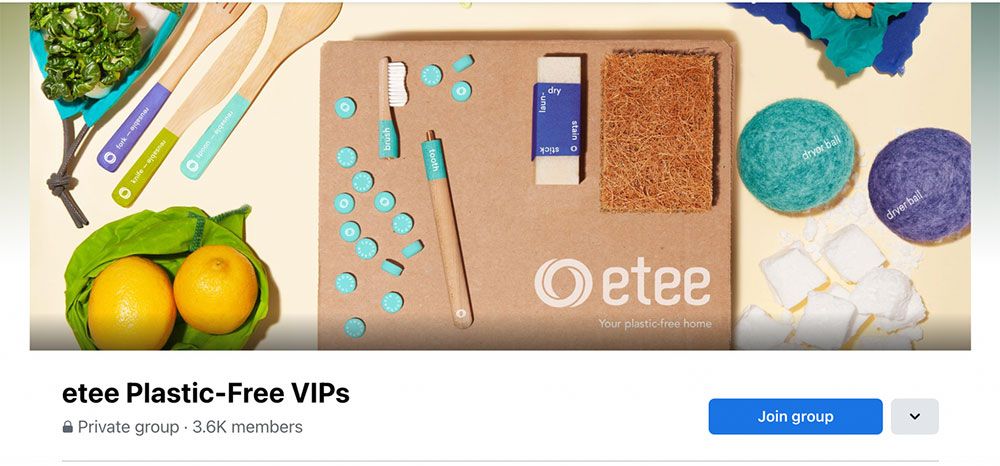
8. Post on Facebook consistently
It’s going to take time to build your fan base, but don’t be discouraged! It might seem like you’re not reaching anybody at the beginning, but if you keep posting consistently, your fans will get in the habit of interacting with you, and you’ll slowly grow your Facebook presence.
Once a week will be plenty to start.
9. Measure the right metrics for success
As you build your Facebook presence, you’ll want to make sure your efforts are paying off.
The number of fans and likes you have in the beginning will be low to start. That’s normal! It will take some time to take off. The important thing is these numbers improve over time. Use your metrics to find the types of content your fans are engaging with and make more of it.
Here’s a step-by-step guide to using Facebook Insights.
Save time on Facebook marketing with a social media scheduling tool
As a small business, marketing on Facebook is no small task. You have dozens of projects to manage and a small team to get it all done. Sometimes it’s a one-person show! So you need to make it as easy as possible on yourself to create and maintain your Facebook content calendar.
Save time with a social media marketing tool like Buffer. With Buffer, you can schedule your posts weeks in advance so you never go dark on Facebook.
Plus, Buffer is free for up to three social media accounts. And you can schedule up to ten posts on each account which is plenty for a small business to get started with Facebook marketing.




